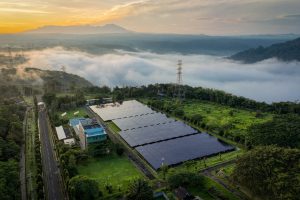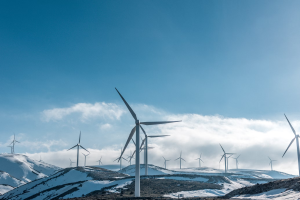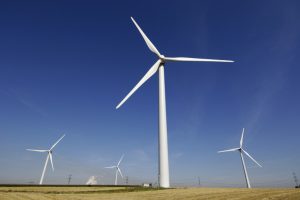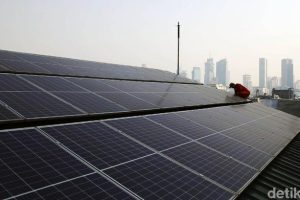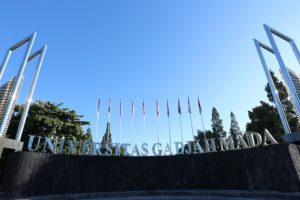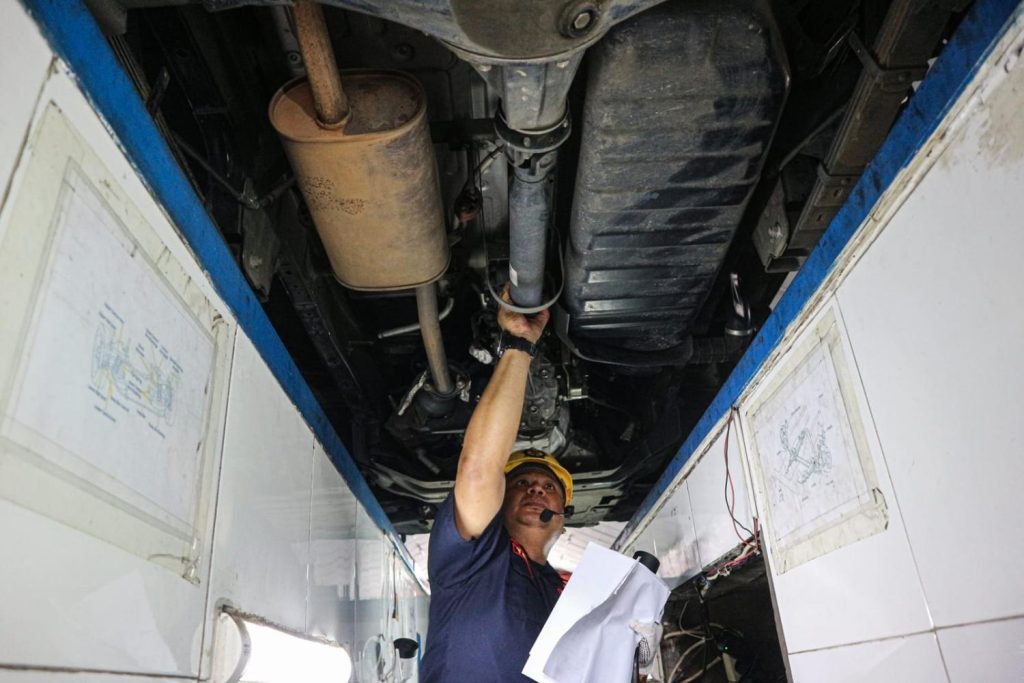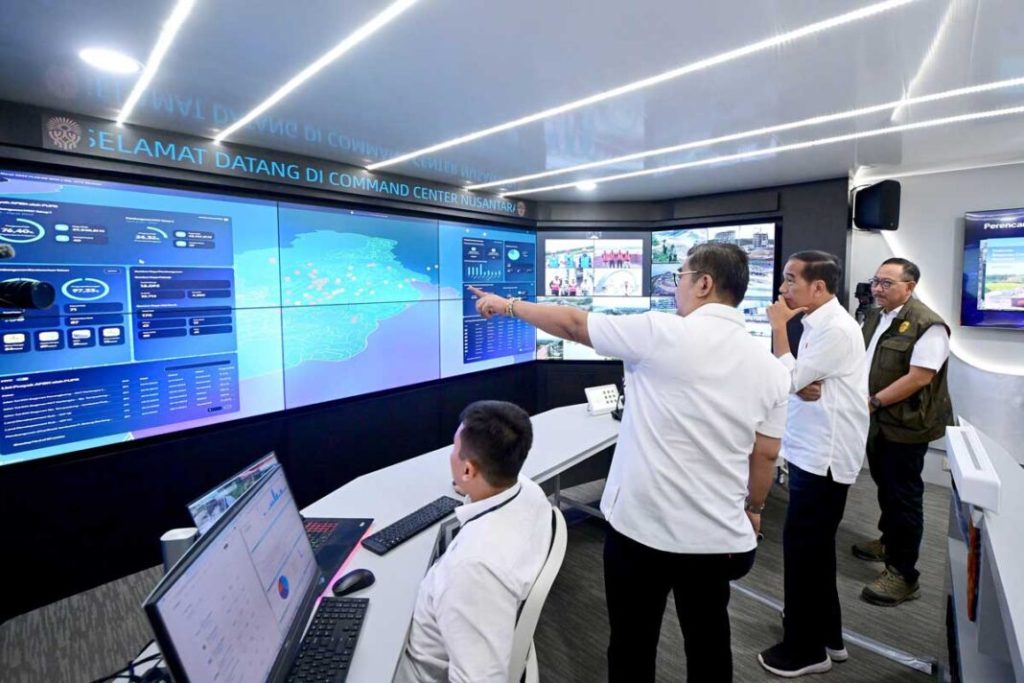Transportation Fuels in Energy Sector
Transportation fuels are one of the most energy-consuming sectors in the world. In 2015, transportation fuels contributed about 25% of the world’s energy consumption. In the transportation sector, the light-duty vehicle is the most energy consumer, and it has raised significantly since 2010 (figure 1) (U.S. Energy Information Administration, 2017). It indicates that the availability of transportation fuels, especially gasoline and diesel are vital. These types of fuel are mostly derived from fossil fuel. Therefore, fossil fuel is one of the most important types of energy source; also, it can be used as a trading commodity.

Figure 1. The transportation sector in energy-consumption (U.S. Energy Information Administration, 2017)
Oil producer countries supposedly have a higher bargaining point due to the high demand for oil and gas commodity in the future. They can receive a massive revenue through oil and gas trade. However, this situation is not beneficial for some developing countries such as Indonesia. Unlike Organization for Economic Co-operation and Development (OECD) countries, developing countries are relying much on fossil fuels (oil, gas, and coal) as their primary energy source. Indonesia is known as one of the oil producer countries in Asia. Since 2008, oil production has been decreased (Figure 2), and at present, Indonesia can produce 760,480 barrel per day (Satuan Kerja Khusus Minyak dan Gas Bumi, 2018).

Figure 2. The declining rate of oil production (Purnomo Yusgiantoro Center, 2019)
Meanwhile, the national consumption has reached almost twice higher than its production. Consequently, Indonesia must import oil and its processed products (gasoline and diesel) to fill this gap.
In 2018, Indonesia allocated IDR 100.7 trillion as a subsidy in fuel and LPG (Liquified Petroleum Gas) (Kementerian Keuangan Republik Indonesia, 2018). This value might change due to the vulnerability of oil price. Indonesia’s oil reserves are also finite, so it is hard to count on the national production without any major discovery. Hence, Indonesia must find a long-term solution, and the development of green fuel must be considered as one of them.
Green Fuel and Its Development in Indonesia
Green fuel is a type of fuel which is derived from plants materials through the thermochemical conversion process. The thermochemical conversion processes are the chemical transformation of biomass to useful fuels and chemicals using heat energy (Kumar, Varkolu, Mailaram, Kunamalla, & Maity, 2018). The liquefaction, gasification, and pyrolysis are three major thermochemical conversion processes (Figure 3). As a processed product, green fuel can be used as a transportation fuel (gasoline, diesel, and jet fuel).

Figure 3. The possible routes for the production of green transportation fuels (Kumar et al., 2018)
Nowadays, Pertamina becomes the pioneer of green fuel development in Indonesia. Green fuel in Indonesia is using crude palm oil/kernel oil as their source. In 2018, Pertamina accomplished to utilize Refined, Bleached and Deodorized Palm Oil (RBDPO), a derivative product of palm oil, to be green gasoline, green diesel, green LPG, and green jet fuel. RBDPO must be processed in Residue Fluid Catalytic Crack Unit (RFCCU) by converting high boiling and high molecular weight of hydrocarbon fraction to be a valuable product such as gasoline, diesel, LPG, and jet fuel. This process is what distinguished between green fuel and biofuel. Sources of biofuel production are transesterification of kernel oil (figure 4) and esterification of fatty acids using methanol/ethanol for the generation of methyl/ethyl esters of fatty acids (Pradhan & Chakraborty, 2018) and being catalyzed by a microorganism.

Figure 4. Processing scheme to obtain biofuel and green fuel (Kumar et al., 2018)
Biofuel has short-time storage and likely to cause engine clogging due to the dirt which is collected in the fuel filter. Biofuel must avoid air contact to maintain the lifecycle of microorganism. These biofuels, however, contain 15% oxygen in their structure leading to lower fuel mileage compared to petroleum-derived transportation fuels (Chakraborty & Mukhopadhyay, 2019) and unfavorable properties such as high viscosity and poor cold flow properties (Kumar et al., 2018). Then, biofuel must be blended with another fuel type in a correct proportion to obtain the best performance. For example, biodiesel can be blended with diesel to the amount of 20% by volume. The blending of bioethanol to gasoline is restricted to 15% by volume. These conditions will not be found in green fuel because the oxygen has been removed through catalytic cracking.
The development of green fuel for commercial use is vital to reduce the burden of state-budget, especially in energy subsidy. Based on Pertamina’s research and experiment in Plaju refinery unit, the implementation of co-processing has produced 64,450 kiloliters green gasoline (octane 90) per month and 11,000 tons LPG per month. By these findings, Pertamina can save 7,360 barrel of oil import per day or approximately US$ 160 million. Also, by developing green fuels, it can increase the value of palm as an important commodity in Indonesia.
Indonesia is known as the biggest palm producer countries in the world. High quality of palm is massively used in cooking oil, as the low quality is less utilized. There are several experiments done to find the right way of utilizing the low-quality palm. It is found out that the low-quality palm can be used as a green fuel source. This situation will be a good opportunity in the oil palm industry because all crops can be utilized without considering its grade. Also, the commercial use of green fuel will help Indonesia in reducing on carbon emission, NOx, SOx, and other poisoned gas in the air, and in achieving the target of the energy mix in 2025 in the renewable energy sector.
Issues in Green Fuel Development
Even though green fuel is a promising type of transportation fuels, several issues may affect the development of green fuel. One of the issues is the massive land use change. Oil palm is known as one of the most significant contributors in non-tax state revenue. In 2017, the export volume of oil palm reached 29.07 million tons, with a total of US$ 20.72 billion (Badan Pusat Statistik Indonesia, 2017). With a promising opportunity for green fuel development, it is a higher chance that many people will expand their business into an oil palm investment. As the demand is rising, but the plantation has a limited area, the massive land use change such as deforestation will be an unavoidable option. If this situation happens, the ecosystem that has been established will be ruined, the regional temperature and carbon emission will rise, and it affects the existence of some endangered living things.
The government plays a significant role to face this issue by enforcing the regulation that has been made, especially in land use change (Law No.41/2009 and MEF Regulation No.P.51/2016). The correct implementation of the regulation has guaranteed the negative effect on land use change will not be happened. The government must demonstrate its authority if there is any violation of the implementation equally.
Another issue regarding green fuel development is refinery capacity. Refinery unit in Plaju, Palembang is the only refinery unit which capable of producing green fuel by producing 7,640 barrel per day. By its daily production, it can be concluded that Indonesia needs more than one refinery unit to increase green fuel production and reduce its dependence on oil import. However, the capital expenditure for the refinery unit is expensive. Therefore, the government must find a way to get more capital from national and international source. The government must build a good investment climate and economic stability to attract global attention. One of the options is by giving an incentive and tax-free for some countries or companies who are interested in green fuel development.
In conclusion, green fuel has a major potency to help Indonesia in reducing oil import dependency and adding another value in oil palm utilization. This opportunity is vital for Indonesia due to an international ban on palm and its processed products. The development of green fuel will also help Indonesia in reducing carbon emission and another dangerous gas type in the air, also in achieving the target of the energy mix in 2025 in the renewable energy sector. The solid role of government is needed to solve any issues which may happen in the future through its regulation, investment climate, and economic stability. “Green Fuel for Green Indonesia” will not be just a tagline without the support of the government.
References
Badan Pusat Statistik Indonesia. (2017). Statistik Kelapa Sawit Indonesia.
Chakraborty, R., & Mukhopadhyay, P. (2019). Green Fuel Blending: A Pollution Reduction Approach. In Reference Module in Materials Science and Materials Engineering. https://doi.org/10.1016/b978-0-12-803581-8.11019-7
Kementerian Keuangan Republik Indonesia. (2018). Informasi APBN 2018. Informasi APBN 2018, 1–38.
Kumar, P., Varkolu, M., Mailaram, S., Kunamalla, A., & Maity, S. K. (2018). Biorefinery Polyutilization Systems: Production of Green Transportation Fuels From Biomass. In Polygeneration with Polystorage for Chemical and Energy Hubs. https://doi.org/10.1016/b978-0-12-813306-4.00012-4
Pradhan, P., & Chakraborty, R. (2018). Optimal efficient biodiesel synthesis from used oil employing low-cost ram bone supported Cr catalyst: Engine performance and exhaust assessment. Energy, 164, 35–45. https://doi.org/10.1016/j.energy.2018.08.181
Purnomo Yusgiantoro Center. (2019). PYC Data Center. Retrieved from https://datacenter-pyc.org/
Satuan Kerja Khusus Minyak dan Gas Bumi. (2018). Good Governance, Foundation for Better Future.
U.S. Energy Information Administration. (2017). Annual Energy Outlook 2017 with projections to 2050. EIA Annual Energy Outlook 2017, 44(8), 1–64. https://doi.org/DOE/EIA-0383(2017)
Disclaimer: This opinion piece is the author(s) own and does not necessarily represent opinions of the Purnomo Yusgiantoro Center (PYC).
